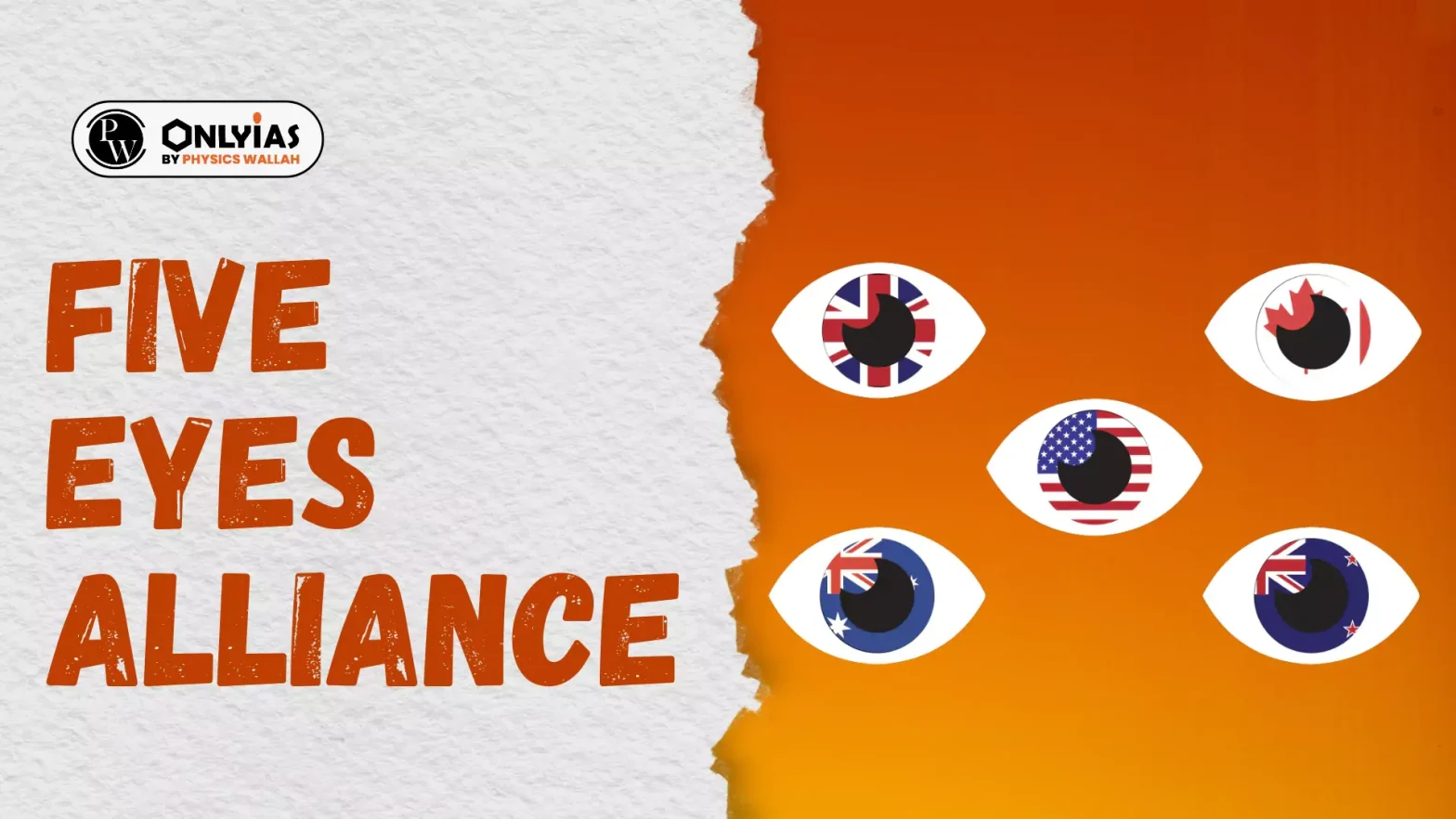Five Eyes Alliance is an intelligence-sharing network that includes five countries members. Learn more about Five Eyes Alliance, its members, and headquarters from here.

The Five Eyes Alliance is one of the most powerful and enduring intelligence-sharing coalitions in the world. It was formed during the Second World War to focus on intercepting and decoding communications but has since evolved into a modern-day intelligence-sharing framework. The name “Five Eyes” derives from the five member countries that participate in this alliance: Australia, Canada, New Zealand, the United Kingdom, and the United States. Known for its advanced surveillance capabilities, the Five Eyes Alliance plays a pivotal role in addressing global security concerns, including counter-terrorism, cyber threats, and geopolitical monitoring.
The Five Eyes Alliance is an intelligence-sharing network between five major English-speaking democracies. Established during World War II, it was initially a wartime agreement between the United States and the United Kingdom. However, it was later expanded to include other countries. The alliance enables member nations to collect, analyze, and share intelligence, particularly in the fields of electronic surveillance, signals intelligence, and cyber defense.
Key Features:
The Five Eyes Alliance traces its origins to the Atlantic Charter of 1941 and the subsequent UKUSA Agreement in 1946. This bilateral agreement between the United States and the United Kingdom laid the groundwork for intelligence collaboration. Over time, the alliance expanded to include Canada (1948), Australia (1956), and New Zealand (1956), thus forming the modern Five Eyes Alliance.
The term refers to the “eyes-only” classification of intelligence shared exclusively among the five member nations. Here is the historical timeline of the Five Eyes Alliance:
| Year | Event |
| 1941 | The U.S. and U.K. begin intelligence collaboration through the Atlantic Charter to counter WWII threats. |
| 1946 | The UKUSA Agreement (BRUSA) is signed, establishing a structured intelligence-sharing framework. |
| 1948 | Canada joins the alliance. |
| 1956 | Australia and New Zealand became part of the alliance. |
| 1973 | Australian PM Gough Whitlam discovers the existence of the BRUSA (British-U.S. Communication Intelligence Agreement) or UKUSA Agreement. |
| 1999 | The alliance is officially recognized by name. |
| 2010 | The full text of the agreement is released to the public after 60+ years. |
The Five Eyes Countries are mentioned below. These nations collaborate closely, pooling intelligence resources and sharing classified information to ensure collective security.
The Five Eyes Intelligence Alliance operates through a vast network of surveillance systems, satellite monitoring, and cyber tools. The Alliance’s network of surveillance systems includes:
Every nation provides intelligence informed by its local knowledge, forming a global network that enhances security for all participants. The Five Eyes Intelligence Oversight and Review Council (FIORC) was established in 2016 to ensure oversight and collaboration among the member nations.
Although the alliance lacks a centralized headquarters, its activities are managed through the national intelligence agencies of the member nations. These agencies comprise:
| Country | Key Intelligence Agency |
| United States | National Security Agency (NSA) |
| United Kingdom | Government Communications Headquarters (GCHQ) |
| Canada | Communications Security Establishment (CSE) |
| Australia | Australian Signals Directorate (ASD) |
| New Zealand | Government Communications Security Bureau (GCSB) |
Japan, a country that is not a member, recently hosted a meeting of the Five Eyes Alliance. Before this gathering, the alliance was under scrutiny due to diplomatic tensions between India and Canada, as it is thought to have supplied information to Canada regarding India’s supposed role in the assassination of a Khalistani separatist.
Ready to boost your UPSC 2025 preparation? Join PW’s UPSC online courses today!
UPSC Exam 2025 Related Articles
UPSC Prelims 2025 Exam
UPSC Notification 2025
UPSC Preparation 2025
UPSC Eligibility 2025
UPSC Exam Pattern
UPSC Syllabus
The Five Eyes Alliance is an intelligence-sharing coalition between the US, UK, Canada, Australia, and New Zealand.
It was formalized in 1946 through the UKUSA Agreement.
The name refers to the exclusive "eyes-only" classification for intelligence shared among the five member nations.
The United States, United Kingdom, Canada, Australia, and New Zealand.
It operates by sharing signals intelligence, conducting joint surveillance, and collaborating on cybersecurity strategies.

<div class="new-fform">
</div>